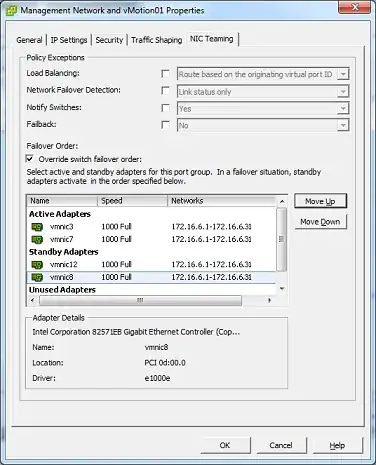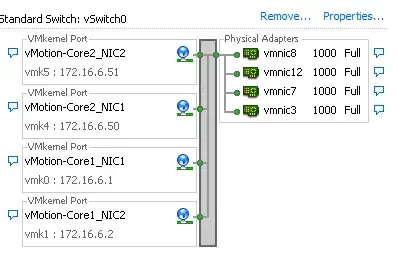Having successfully followed VMware KB article setting up multi-nic vMotion, I am now struggling to get this working with a two core switches.
A single Active vmnic and a single Standby vmnic is functioning as it should.
However, the issue is due to the nature of the setup. We have 2 core switches (sets of stacked switches), in a active/passive setup connected via LACP.
How can i get this working with 2 core switches?
Working Setup
The working configuration has 1 active and 1 standby vmnics from a single Core.
Vmnic 3 & 12 are from Core 1. A second vmkernal is also setup to the opposite active an standby adapters.

Not Working
Vmnic 7 & 8 are from Core 2. Once again, a second vmkernal is setup to reflect the opposite of active and standby adapters.

If anyone can shed some light on this or have a plausible solution, I am in the position to test this before putting into live.

